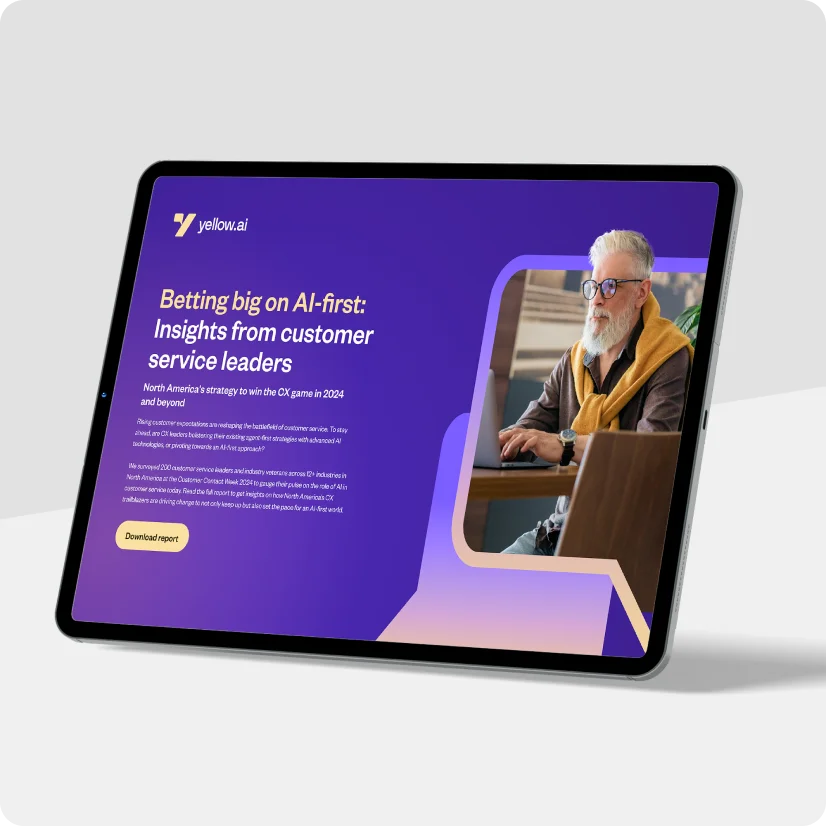Executive summary
Customer touchpoints play a crucial role in every business-customer interaction. This blog takes you through the essence of customer touchpoints, illustrating their role in sculpting the customer journey and enhancing customer experience (CX). From the initial spark of interest to the post-purchase glow, every touchpoint is an opportunity to impress and retain customers. We’ll navigate through the various touchpoints, providing insights on optimizing each for a seamless, satisfying customer journey. This comprehensive guide offers practical examples and strategies, positioning it as a vital tool for businesses aiming to elevate their customer engagement game.
Introduction
The concept of customer touchpoints is a critical element in shaping the customer journey and enhancing the overall customer experience (CX). Each touchpoint represents a moment of truth where businesses have the opportunity to influence customer perception positively and build lasting relationships. It is a strategic mix of interaction, communication, and experience management that can set a brand apart in today’s competitive market.
Consider the weight of these interactions: A Salesforce report reveals that 88% of customers say the experience a company provides is as important as its products or services. This statistic is a clarion call for businesses to map out and meticulously enhance every customer touchpoint. From the initial digital advertisement that catches a customer’s eye to the post-purchase follow-up email that makes them feel valued – every step in this journey matters.
This blog aims to explore these various touchpoints in-depth, offering insights and strategies to refine them for a more impactful customer journey.
What are customer touchpoints?
Customer touchpoints are those moments when someone bumps into your brand, forming the steps of their journey from curiosity to loyalty. Picture each touchpoint as a handshake or a conversation, ranging from seeing an ad and visiting your website to getting support help. It’s all about the interactions, whether big, like a purchase, or small, like social media engagement.
Related read: 10 Reasons why customer experience is important?
Now, why fuss over these touchpoints? Each one is your stage to shine. For instance, a person spots your eco-friendly ad on Instagram, clicks, and lands on your site. These moments are your chances to impress. When they buy something, and later, when you send them a friendly email, or they reach out with a question, you’re weaving your brand into their daily life. Done right, these touchpoints turn a browser into a buyer and then a fan.
The magic of these touchpoints lies in their cumulative impact. It is vital to understand that these touchpoints are not isolated interactions. Instead, they are parts of a more extensive and cohesive journey. Each touchpoint builds on the previous, and combined, they weave experiences that can turn a casual browser into a loyal customer. The artistry for businesses lies in recognizing and optimizing these touchpoints to create a smooth, satisfying customer journey that resonates with both the consumer’s mind and heart.
Related must-reads:
- Customer service software: How to select the best one
- Good customer service: Ways to deliver [+10 Examples]
- Customer service automation – A full guide
- Customer service strategy: A step-by-step guide
Why are customer touchpoints important?
The significance of customer touchpoints in the business landscape cannot be understated. They are the gears that drive the mechanism of customer engagement and satisfaction. Each touchpoint holds the potential to elevate a customer’s experience and build a deeper connection between them and your brand. This relationship-building is crucial in a market where customers have several options. Well-managed touchpoints can become the distinguishing factor that sets your brand apart, turning casual interactions into lasting customer loyalty.
Related read: Customer Experience vs. Customer Service
1. Creating a positive brand image: Each touchpoint is an opportunity to reinforce a positive image of your brand in the customer’s mind. Whether it’s through a user-friendly website interface, a helpful customer service call, or a prompt response on social media, these interactions collectively build a perception of your brand as caring, efficient, and customer-centric.
2. Facilitating repeat business and loyalty: Personalized and positive touchpoints significantly influence customer decisions to return for repeat purchases. Customers who feel valued and understood are more likely to become loyal brand advocates. They will share their positive experiences with others and contribute to organic business growth.
3. Streamlining customer service: Efficient management of touchpoints can lead to higher resolution rates from the first contact, simplifying the workload for customer service teams. Besides improving the work environment for your employees, it also ensures that customers receive quick and effective solutions.
4. Gathering insightful feedback: Every interaction is a chance to gather valuable feedback. Analyzing these touchpoints provides insights into customer preferences and pain points, enabling you to fine-tune your offerings and communication strategies.
5. Enhancing customer retention: Customer experience often trumps price and product in today’s world. So, mastering touchpoints is vital to retaining customers. Keeping existing customers is generally more cost-effective than acquiring new ones. That makes touchpoint optimization a financially sound strategy.
6. Building a loyal customer base: Satisfied customers are likely to choose your brand for future needs. That forms a loyal customer base that is less susceptible to competitive market shifts.
7. Optimizing post-sales support: A well-managed customer journey allows for more effective post-sales support. It involves addressing inquiries and resolving issues swiftly, which further cements customer trust in your brand.
How to identify customer touchpoints effectively?
Identifying customer touchpoints is like mapping a well-traveled road; it involves understanding every stop-and-start that a customer experiences with your brand. Here’s how businesses can effectively identify these vital interactions:
1. Decoding customer insights
Start by getting under the skin of your target audience. Who are they? What do they need? Conduct market research and analyze customer feedback to understand their preferences. For instance, if your clientele primarily discovers your services through online searches, then your digital presence (websites, online ads, SEO efforts) becomes a crucial touchpoint. Tailor these digital interactions to create a strong first impression.
2. Evaluating interaction patterns
Review how customers currently interact with your business. Is it through your social media platforms, website, or in-store visits? Customer surveys can reveal where your audience prefers to engage. That will enable you to focus your efforts on enhancing these touchpoints. For example, if a majority interact via social media, it’s time to ramp up your social media engagement strategies.
3. Charting the customer journey
Mapping out the customer journey helps you visualize how customers go from recognizing a need to making a purchase and beyond. Outline the journey for each buyer persona. It can start from discovery to post-purchase interactions. Understanding this journey in detail allows you to identify where you can improve experiences and smooth out any friction points.
4. Gathering direct feedback
Use tools like Net Promoter Score (NPS) surveys to gauge customer satisfaction and the likelihood of referrals. These surveys can pinpoint areas of discontent and help you identify which touchpoints need refinement. For example, if customers indicate dissatisfaction with post-purchase support, this area becomes a priority for improvement.
5. Continual reassessment
The process of identifying and refining customer touchpoints is ongoing. Regularly revisit your customer journey map and touchpoint analysis, especially when introducing new products, services, or marketing campaigns. Keep abreast of changing customer preferences and market trends to ensure your touchpoints remain relevant and effective.
Examples of customer touchpoints
Customer touchpoints include every interaction a customer has with a brand. Each of these touchpoints shapes a customer’s perception and experience. These crucial moments define the journey a customer takes with a business, from first awareness to post-purchase engagement. Let’s explore these touchpoints in detail, dividing them into three key stages: before purchase, during purchase, and after purchase.
Phase 1: Before purchase
The customer journey begins even before a customer decides to make a purchase. This before-purchase phase is all about creating the right first impression. It builds the foundation of a potential long-term relationship. It involves the initial interactions that a customer has with your brand, often determining whether they will proceed to the next step in the buying process.
1. Social media
While most people think that platforms like Meta, Instagram, and X are just for socializing, the truth is that they’re vital for first impressions. A customer’s journey often begins here, where they discover your brand, engage with your content, and form initial opinions.
Effective use of these platforms involves more than just promotional posts. You must focus on authentic engagement, responding to comments, and sharing content that resonates with your audience’s interests and values. This stage is crucial for building brand awareness and setting the tone for customer expectations.
2. Digital advertisements
These are the billboards of the digital age. Whether it’s a banner ad on a website, a sponsored post in a social feed, or a targeted ad on a search engine, digital advertisements are often the first point of direct interaction between your brand and potential customers.
These ads need to be eye-catching, relevant, and, most importantly, lead to a landing page that delivers on the ad’s promise. It’s about creating a seamless transition from interest to engagement.
3. Customer reviews
Reviews on platforms like Amazon or TripAdvisor play a crucial role in shaping potential customers’ expectations. They provide insights into other customers’ experiences, offering a glimpse into what new customers might expect. Businesses must monitor and manage these reviews, addressing concerns and highlighting positive feedback. This stage is crucial for building trust and credibility.
4. Family or friend referral
Personal recommendations carry significant weight. A referral acts as a trust signal, often carrying more influence than any advertisement or review. Encouraging referrals through loyalty programs or incentives can turn satisfied customers into brand ambassadors. These ambassadors will extend your reach through their networks.
5. Website resources
A well-designed website acts as a digital storefront. It’s where potential customers explore, learn about your offerings, and make decisions. Resources like informative blog posts, detailed product descriptions, and FAQs help guide customers, providing them with the knowledge they need to move forward confidently in their purchase journey.
Phase 2. During Purchase
It is a phase where interest transforms into action. It’s a critical stage where the customer’s experience can directly influence the outcome of a sale. This phase includes all interactions that occur during the actual purchasing process, such as conversations with sales or support teams, navigating the ecommerce site, and the point-of-sale experience.
6. Conversations with sales or support teams
Direct interactions with your team can make a significant impact. These conversations are opportunities to provide personalized advice, address concerns, and build a connection. Training your team to understand customer needs and offer solutions can turn a simple inquiry into a successful sale.
7. Product brochures
Product brochures are like the storytelling books of your brand’s offerings. Whether flipping through pages or scrolling online, these brochures paint a picture of what you are selling in vivid detail. They are a combination of eye-catching design and essential info. They guide customers through features, benefits, and why your product is the solution they have been searching for. A well-crafted brochure engages and persuades, turning curiosity into concrete interest.
8. Product reviews
Product reviews are the word-of-mouth. They offer a platform for customers to share their experiences about your services. Reviews give a raw, unfiltered glimpse into the real impact of your products or services. Whether praise or constructive criticism, each review adds to your brand’s credibility and trustworthiness. Engaging with these reviews showcases your commitment to customer satisfaction and continuous improvement.
9. Website or ecommerce site
Your online presence must be user-friendly, informative, and reflective of your brand’s values. It includes easy navigation, clear product information, and a straightforward checkout process. Ensuring a smooth online experience is key to converting interest into sales.
10. Point of sale
The actual transaction moment, whether in-store or online, should be efficient and secure. This final step in the purchase process is crucial in leaving a positive impression and encouraging repeat business.
Phase 3. After purchase
After the purchase is made, the journey is far from over. The ‘After Purchase’ phase is where you solidify the customer’s decision, enhance loyalty, and lay the groundwork for future interactions. This stage includes touchpoints like customer onboarding, follow-up communications, satisfaction surveys, and ongoing support.
11. Customer onboarding
After a purchase, the first step in solidifying a customer’s loyalty is effective onboarding. This process involves guiding new customers through the features and benefits of your product or service, ensuring they understand and can fully utilize their purchase. A well-designed onboarding experience can significantly reduce churn by addressing any potential confusion or issues upfront.
12. Thank-you or welcome emails
The power of a personalized thank-you or welcome email can’t be overstated. This simple gesture of appreciation can make customers feel valued and recognized. Such emails can also provide additional information about the product or service, offer customer support contacts, or promote related products or services. The key is to strike a balance between gratitude and informative content, enhancing the customer’s post-purchase experience.
13. CSAT surveys
Customer satisfaction (CSAT) surveys are crucial for gauging how well your product or service has met the customers’ expectations. Sending out these surveys shortly after purchase provides timely insights into the customer’s experience. This feedback can be instrumental in making improvements to your offerings or customer service approach. Addressing any negative feedback promptly can also help in resolving issues before they escalate, ensuring a better customer experience.
Related read: How to Improve Customer Satisfaction in 2024?
14. Customer support channels
Providing accessible and efficient customer support channels is vital after a purchase. These channels could include live chat, email support, phone support, or social media interactions. The goal is to offer easy and quick ways for customers to seek help or get their questions answered. An effective customer support system not only resolves issues but also strengthens customer trust and loyalty.
15. Company knowledge base or community forum
A comprehensive knowledge base or an active community forum can be invaluable resources for customers post-purchase. These platforms can offer self-help options like FAQs, how-to guides, and user forums, allowing customers to find answers at their convenience. A well-maintained knowledge base or community forum not only enhances customer autonomy but also reduces the load on your customer service team, creating a win-win situation for both the business and its customers.
How Yellow.ai enhance customer touchpoint identification and engagement
As the market evolves, understanding and utilizing customer touchpoints has become more crucial than ever. Yellow.ai chatbots are intelligent partners in this journey, offering businesses the finesse needed to identify and make the most of every customer interaction.
The Yellow.ai edge: Transforming customer touchpoint management
1. AI-powered insights: Yellow.ai’s chatbots delve deep into customer interactions, extracting valuable insights that help businesses understand and optimize touchpoints.
2. Omnichannel presence: Seamlessly integrating across various platforms, our AI chatbots ensure a unified experience, whether customers engage on social media, websites, or messaging apps.
3. Personalized interactions: Tailoring conversations based on customer behavior and history, Yellow.ai chatbots make each interaction feel personal and relevant.
4. Real-time engagement: With the capability to respond instantly, Yellow.ai chatbots keep customer engagement continuous and interactive. That significantly enhances the customer journey.
5. Data-driven decision-making: By analyzing customer interactions, our AI chatbots help make informed decisions to refine marketing strategies and customer service approaches.
6. Scalability and efficiency: Our AI chatbots automate routine inquiries and free up human resources for more complex tasks. It ensures a high level of efficiency.
Embrace the future of customer interaction with Yellow.ai. Book a demo to discover how our AI chatbots can revolutionize your customer touchpoint strategy.
Success stories

Hyundai boosts revenue and improves customer service with AI automation
Explore how Yellow.ai’s automation led to ~1000 car sales, a 10% retail conversion rate, and over 1.4 million user impressions

Pelago reimagines customer experience with generative AI powered conversational AI agents
Within a mere six weeks of going live, Pelago not only onboarded over 5,000 users but also achieved a striking 50% deflection rate!
The final thoughts
The landscape of customer interaction is both complex and dynamic. In this age, where every touchpoint can turn a potential lead into a loyal customer, understanding and optimizing these interactions is essential. The key lies in integrating technology like Yellow.ai’s AI chatbots with a deep understanding of customer needs. This mix of technology and empathy is what transforms routine interactions into memorable customer journeys.
Frequently asked questions (FAQs)
Why are customer touchpoints important?
Customer touchpoints are vital because they represent every interaction a customer has with your brand. These moments shape their perception, influence their satisfaction, and ultimately determine their loyalty. Each touchpoint is an opportunity to build trust, address needs, and enhance the overall customer experience, leading to stronger customer relationships and long-term business success.
What is touchpoint analysis, and how do I conduct one?
Touchpoint analysis involves examining all the points of interaction between a customer and a brand. To conduct one, start by mapping out the entire customer journey, identifying all potential touchpoints (from discovery to post-purchase), and assessing their effectiveness and impact. Use customer feedback, analytics, and direct observations to evaluate how these touchpoints are currently managed and identify areas for improvement.
How do customer touchpoints affect customer loyalty?
Customer touchpoints directly affect loyalty by shaping the customer’s overall experience with your brand. Positive and meaningful interactions at each touchpoint can foster satisfaction, trust, and emotional connection, leading to repeat business and advocacy. Conversely, negative experiences can quickly erode loyalty, pushing customers toward competitors.






















